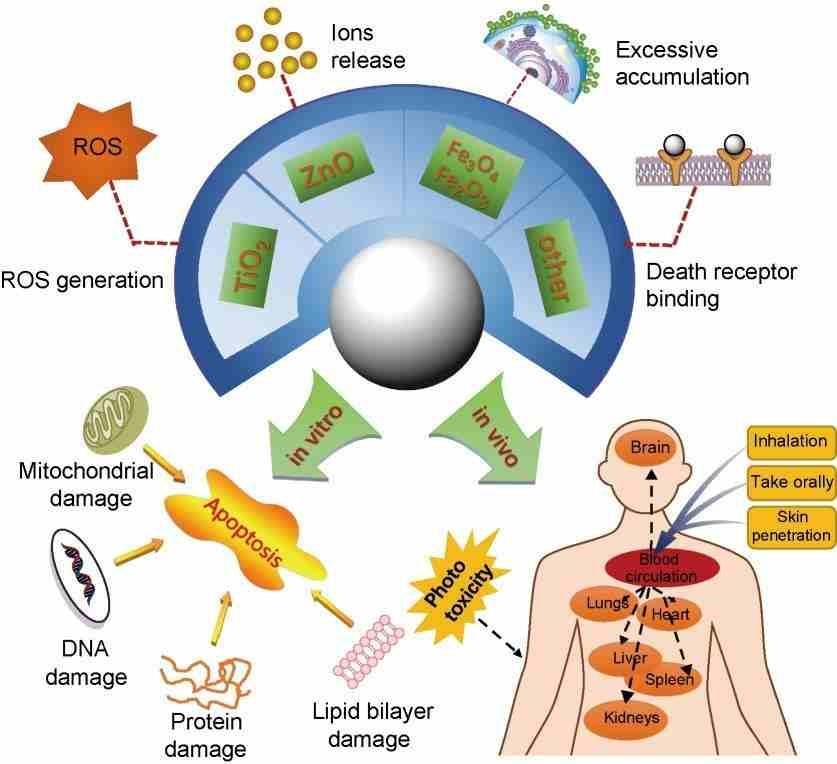Nanomaterials have been widely used in many fields due to their unique properties. However, with the large-scale preparation and wide application of nanomaterials, their potential harm to the environment and human beings has attracted more and more attention. As a class of nanomaterials, metal oxide nanoparticles (MONPs) are widely used in food, medicine, cosmetics, sensors and other fields. Therefore, the biological toxicity research of MONPs is very important. This article mainly summarizes the biological toxicity research and the toxicity mechanism of the most widely used MONPs (nano-titanium dioxide, zinc oxide, iron oxide, etc.). The mechanism of MONPs causing toxicity has two aspects: ROS-mediated toxicity and non-ROS-mediated toxicity. ROS activates oxidative stress, leads to lipid peroxidation, and causes cell membrane damage. In addition, ROS can activate caspase-9 and caspase- 3. Trigger the apoptosis pathway. Non-ROS-mediated toxicity mechanisms include toxicity caused by ions released by MONPs, adhesion of nanoparticles to cell surfaces, and interactions with specific death receptors. In addition, since the properties of nanomaterials, including size, particle size, surface chemistry, etc. will change when they are in a complex system, we also discussed the compound toxicity of some MONPs.
We systematically reviewed the toxic effects of the most widely used MONPs in vivo and in vitro. The toxicity of MONPs is influenced by many factors, such as size, shape, and surface chemistry. At the same time, different exposure routes affect toxicity and biological distribution in vivo. However, to date, defining the characteristics that lead to the dangerous nature of certain NPs remains a huge challenge, which is crucial to determining the practical application of MONPs. The toxicity of MONPs remains controversial. Current assays used for toxicity assessment of ions are not well adapted to these measurements, and many results are even published based on unreliable methods. Therefore, it is necessary to further develop a set of unified MONPs toxicity assessment methods. In addition, very little has been reported so far on the combined role of MONPs. Safety evaluation criteria for MONPs used in commercial products are usually based on the toxicity of a single MONPs. However, because the size, chemical properties and surface properties of nanomaterials have a significant impact on the toxicity of nanomaterials, the toxic effects may change when MONPs are used in consumer products such as cosmetics, food and the environment.

https://link.springer.com/article/10.1007%2Fs40843-016-5157-0